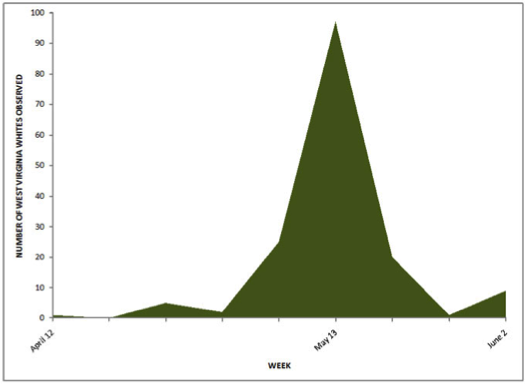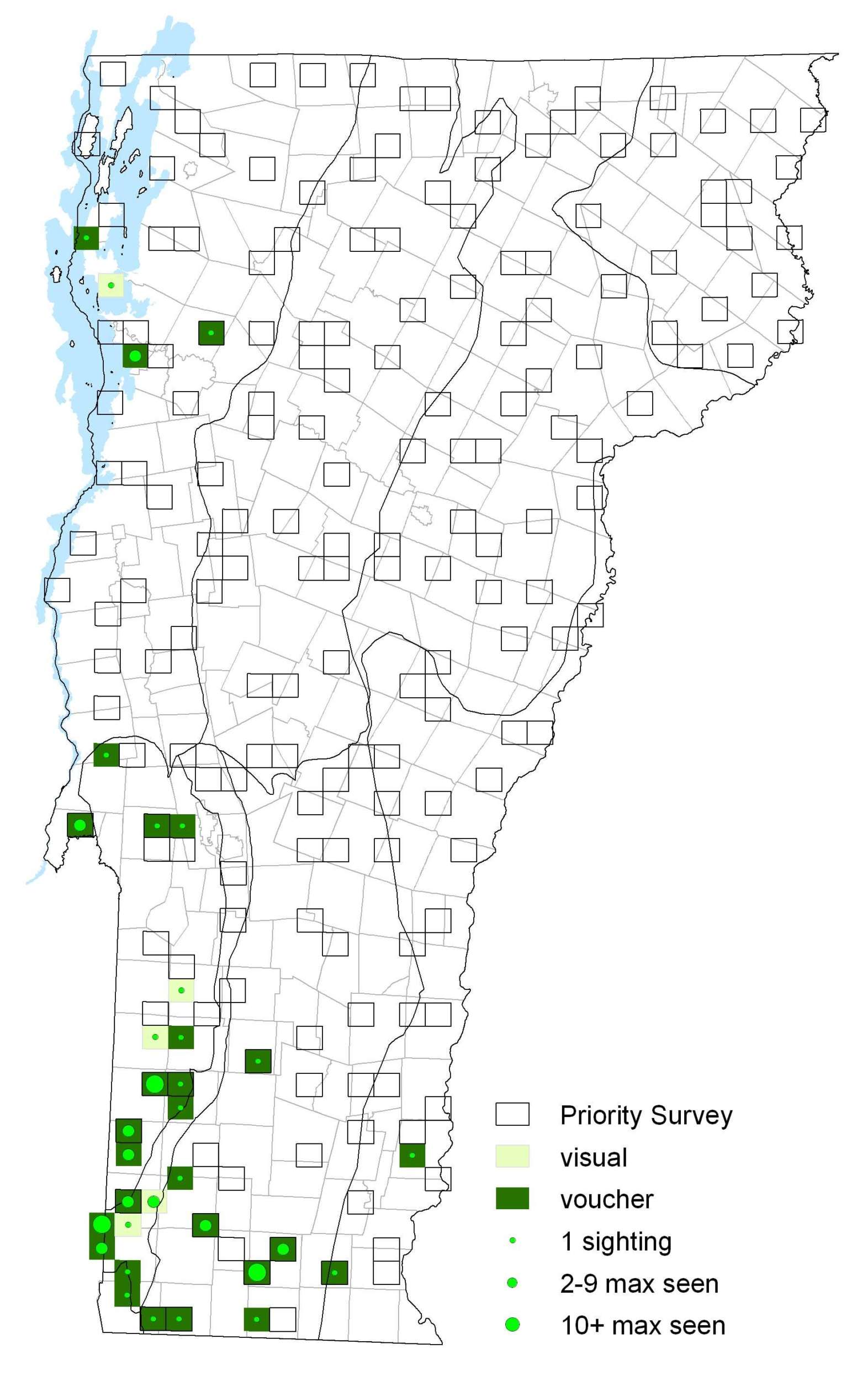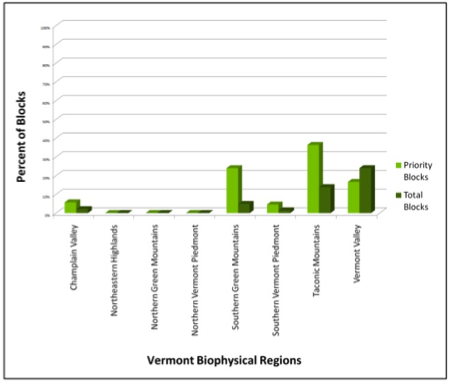|
Resident Conservation Status North American Range |
This spring gem is a butterfly of rich, deciduous woodlands. Vermont represents the northeastern most edge of its range. It has been listed as a species of special conservation concern in Vermont since 1990.
Deforestation and fragmentation of forests into small woodlots in the past probably led to a decline in this species. Colonies apparently disappear easily. Poor spring weather can cause difficulties for adults trying to mate and lay eggs. Survival of caterpillars to the 4th instar is comparable to that of the abundant Cabbage White. However, West Virgina White larvae fall victim to host plant senecence in the 4th and 5th instar and sometimes starve. The introduction of Garlic-mustard (Alliaria petiolata) to Long Island in 1868. Females are attracted to Garlic Mustard and lay eggs on it, but young larvae are poisoned by it. Additionally, build up of granulosis virus in the soil in colonies causes premature death of larvae. Once a colony has been extirpated in an isolated woodlot, adults will not recolonize because they will not fly across open areas.
Adults have one short flight period in the spring and the entire life cycle is closely tied to the host plant. Shortly after Toothwort leaves and flower stalks emerge in April, adult West Virginia Whites eclose from winter-diapausing pupae. Mating and oviposition begin within a few days of ermergence. Eggs are laid singly on the underside of the leaves and hatch in May when leaf growth has been completed and young larvae will find plentiful food. Caterpillars in 1st to 3rd instar feed on the underside edges of the leaves, while 4th and 5th instars move to the tops of the leaves. Larvae complete their development by the beginning of June, at which time they pupate and enter diapause until the following spring. June also marks the senesence and withering of Toothwort foliage, leaving no other woodland plant suitable for West Virginia Whites. Although toothwort is a perenial, most of its biomass is underground. Above ground stalks bear relatively small and ephemeral leaves. Larvae frequently defoliate these by 4th and 5th instar at which time they are forced to search for other Toothwort plants.
Identification
Almost completely white above with some gray scaling on the forewing. Whitish below with no yellow wash. Veins on the underside of the hindwing are faintly outlined in pale gray scales. It is often confused with the Mustard White, which by contrast shows dark green-black veins on the underside of the hindwing during the spring flight.
Flight
Adults only fly in spring before trees are fully leafed out. They are largely finished for the year by the second week of June. Extreme dates: 12 April 2006 in Bennington (T. Armada) and 5 June 2003 in Sandgate (D. Rolnick).
Distribution and Habitat
This butterfly relies completely on relatively undisturbed and mature rich, hardwood forests. Host plants are Crinkleroot (Cardamine diphylla) and Cut-leaved Toothwort (Cardamine concatenata). Adults nectar from Toothworts, Spring Beauty (Claytonia virginica), Violets (Viola), and other spring wildflowers.
This butterfly relies completely on relatively undisturbed and mature rich, hardwood forests. Host plants are Crinkleroot (Cardamine diphylla) and Cut-leaved Toothwort (Cardamine concatenata). Adults nectar from Toothworts, Spring Beauty (Claytonia virginica), Violets (Viola), and other spring wildflowers.








